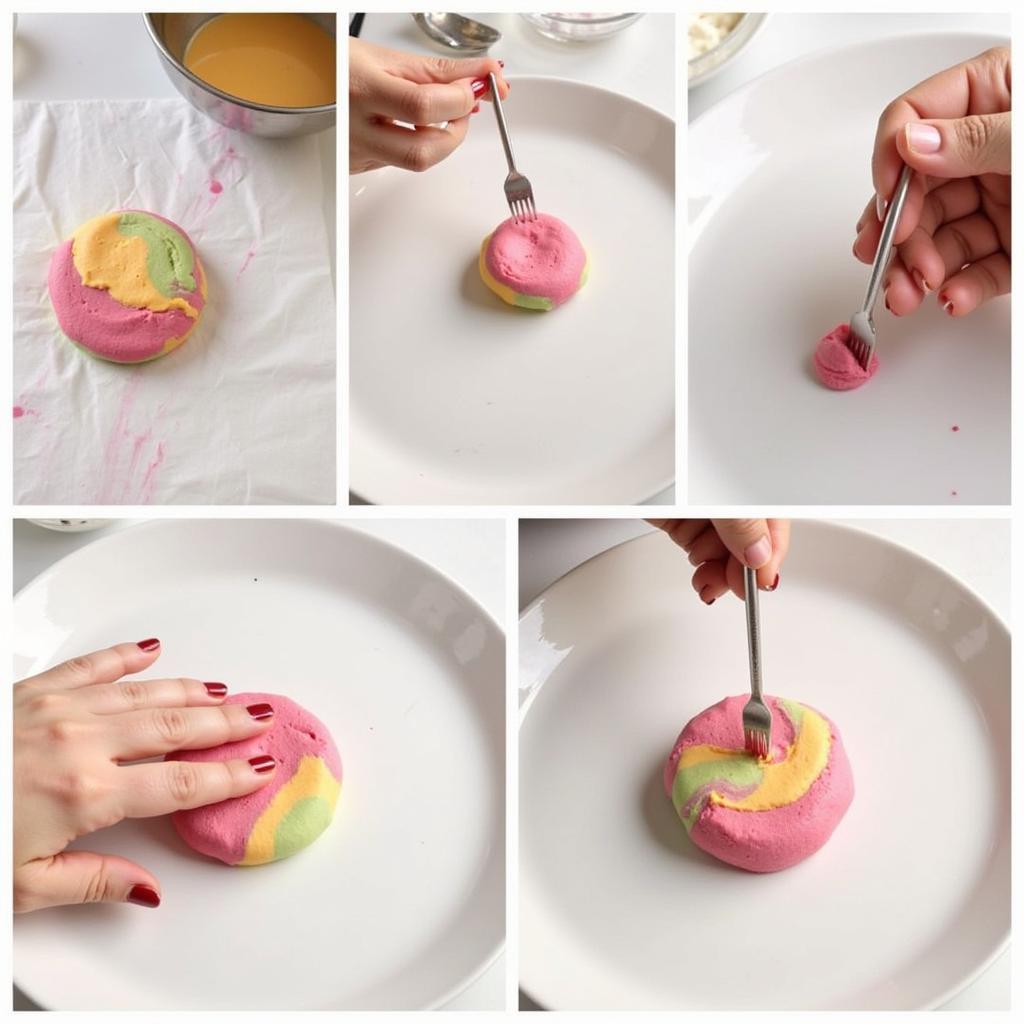Marzipan, that sweet, pliable almond paste, is a delight to work with, especially when it comes to creating colorful edible decorations. But how do you color marzipan effectively and achieve vibrant, consistent results? This guide will explore various methods, tips, and tricks for coloring marzipan, transforming it from a simple off-white canvas into a spectrum of possibilities for your cakes, cookies, and other culinary creations.
Choosing the Right Coloring Agent
The success of your marzipan coloring endeavors depends largely on the type of coloring you choose. Several options exist, each with its pros and cons:
- Gel Food Coloring: Gel colors are highly concentrated, offering vibrant hues with just a small amount. They don’t significantly alter the consistency of marzipan, making them a popular choice.
- Liquid Food Coloring: While readily available, liquid food coloring can make your marzipan sticky. Use it sparingly and be prepared to knead in extra powdered sugar to adjust the consistency.
- Powdered Food Coloring: Powdered colors are less intense than gels but offer good control over the shade. They are also less likely to affect the texture of your marzipan.
- Natural Food Coloring: For those seeking natural alternatives, options like beetroot powder (pink/red), turmeric (yellow), and spinach powder (green) can be used. Keep in mind that natural colors are often less vibrant and may require more experimentation.
Techniques for Coloring Marzipan
Now that you’ve chosen your coloring agent, let’s dive into the actual process of coloring marzipan:
- Start Small: Begin with a tiny amount of color and gradually add more until you achieve your desired shade. It’s easier to add color than to remove it.
- Knead Thoroughly: Once you’ve added the color, knead the marzipan vigorously for several minutes. This ensures even distribution of the color and prevents streaking. Similar to [how to color marzipan], this technique also helps achieve a consistent color throughout.
- Use Gloves: Food coloring can stain your hands. Wearing disposable gloves is recommended, especially when working with darker colors.
- Adjust Consistency: If your marzipan becomes too sticky, knead in small amounts of powdered sugar until it reaches the desired texture.
- Create Marbled Effects: For a unique look, partially mix different colors into the marzipan, creating a marbled or swirled effect.
 Various Marzipan Coloring Techniques
Various Marzipan Coloring Techniques
Tips for Achieving Specific Colors
- Black: Achieving true black with food coloring can be tricky. Start with a deep brown or dark blue and gradually add more color until you approach black. For more insight on color and design, explore [why is color temperature important in design].
- Pastels: For delicate pastel shades, use a small amount of color and knead thoroughly. White food coloring can also be used to lighten the shade.
- Bright Colors: Gel colors are your best bet for achieving vibrant, eye-catching colors.
Troubleshooting Common Marzipan Coloring Issues
- Uneven Color: This is usually caused by insufficient kneading. Continue kneading until the color is evenly distributed.
- Sticky Marzipan: Too much liquid food coloring can make marzipan sticky. Add powdered sugar to restore the proper consistency.
- Dull Colors: If your colors aren’t vibrant enough, try using a more concentrated coloring agent, like gel food coloring. You can learn more about color in articles like [what color is marzipan] and [what color is truffle].
Conclusion
Coloring marzipan opens up a world of creative possibilities. By understanding the properties of different coloring agents and following the techniques outlined in this guide, you can transform plain marzipan into a vibrant medium for your edible art. Remember to start small, knead thoroughly, and have fun experimenting with different colors and techniques! Don’t hesitate to contact us for support at Phone Number: 0373298888, Email: [email protected] or visit our address: 86 Cau Giay, Hanoi. We have a 24/7 customer service team.
FAQ
-
Can I use regular food coloring to color marzipan?
Yes, but liquid food coloring can make it sticky. Gel colors are recommended. -
How do I prevent my marzipan from drying out while coloring it?
Keep the marzipan covered with plastic wrap when not actively kneading it. -
Can I mix different colors to create new shades?
Absolutely! Experimenting with color combinations is encouraged. -
How do I store colored marzipan?
Wrap it tightly in plastic wrap and store it in an airtight container at room temperature. -
How long does colored marzipan last?
Properly stored, it can last for several weeks. -
How can I achieve a deep black color?
Start with a dark brown or blue and gradually add more color. -
What can I do if my marzipan becomes too soft after coloring?
Knead in powdered sugar to firm it up.
You might also find these articles helpful: [what color is truffle] and [why is color temperature important in design].
